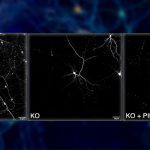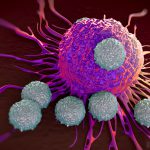Remember that tingling sensation after your leg brushes up against a poison ivy plant? University of Pittsburgh School of Medicine neurobiologists are one step closer to figuring out the intricacies of how our nervous system makes us feel itchy.
In a paper published recently in the Journal of Neuroscience, researchers from the Pittsburgh Center for Pain Research in the lab of Sarah Ross identified a new group of nerve cells, or neurons, of the spinal cord that transmit and process the message of an itchy sensation on the skin. These neurons, scientists found, carry a protein called neurokinin-1 receptor, or NK1R, and appear to be selectively involved in causing itchiness, but not in detecting changes in temperature.
The discovery was unexpected, said Tayler Sheahan, a postdoctoral fellow at the Department of Neurobiology and a lead author of the study.
“We wanted to figure out what role NK1R neurons play in the processing of different kinds of pain and thought that they will be important for cold sensing,” she said. “So we were very surprised when it turned out to not be the case at all!”
Sheahan and her colleagues identified NK1R neurons in similar locations in the spinal cord of both mice and humans. They also used various tools to activate and block neuronal NK1R receptors in mice to see how it changed the animals’ behavior in response to changes in temperature or chemical irritation.
For her experiment, Sheahan put a mouse on a glass platform and applied an indirect cold source or heat underneath the mouse’s paw. The amount of time it takes an animal to withdraw will indicate how acutely it can feel the change in temperature, she reasoned. Surprisingly, when she activated NK1R neurons, she saw no difference in the way animals acted.
But when Sheahan injected a mouse’s calf with chloroquine, an antimalarial drug that also causes itchiness, mice whose NK1R neurons were experimentally activated spent more time biting their limb than those who weren’t.
“Think about your pet: Sometimes dogs will bite themselves when grooming to scratch the itch,” laughed Sheahan. “It was very interesting that this was the only effect of NK1R activation that we saw.”
Researchers also discovered that the way itch sensation is processed in the spinal cord is more complex and interconnected than was thought before: They found NK1R in several types of neurons of the spinal cord — those that relay the signal to the brain and those that integrate the signal more locally.
“It adds richness and another layer of complexity to what we know about the way neuronal connections are organized,” said Sheahan. “We hope that our findings will shape new ideas about how sensory information is processed in the spinal cord.”








